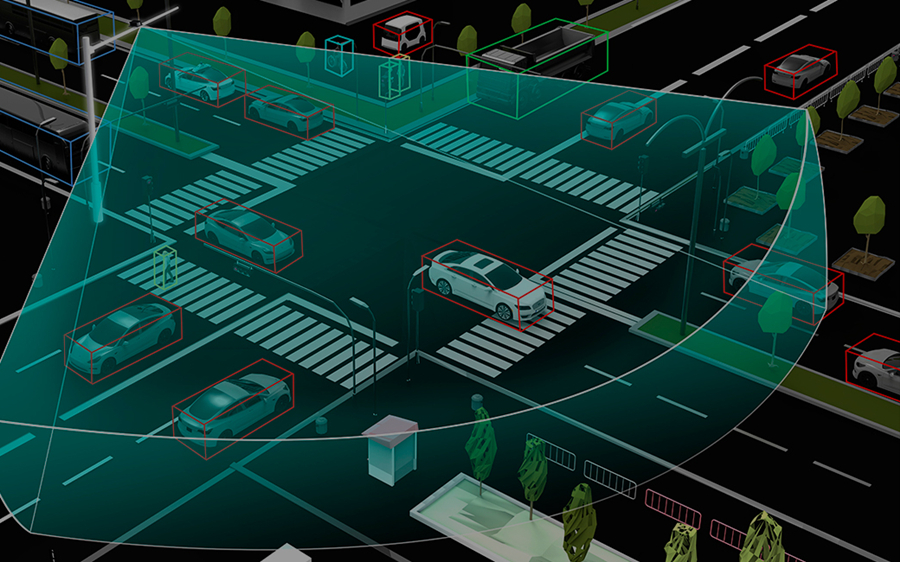Traffic Radar : Revolutionizing Modern Transportation and Safety

Introduction
Traffic radar systems have become indispensable tools in modern transportation, enabling real-time monitoring, accident prevention, and efficient traffic flow management. From highway speed enforcement to smart city infrastructure, these systems leverage advanced technologies like millimeter-wave radar, AI, and vehicle-to-infrastructure (V2I) communication to address complex challenges. This article delves into the evolution, applications, and future trends of traffic radar systems, highlighting their critical role in shaping safer and smarter mobility solutions.
1. Types of Traffic Radar Systems and Their Applications
1.1 Speed Enforcement Radar
Speed enforcement radars are widely used by law enforcement agencies to detect vehicle speeds and enforce traffic regulations. Modern systems, cover up to four lanes with a target capture rate exceeding 99%, providing lane-level precision for identifying speeding violations. These radars integrate with automated ticketing systems, offering reliable evidence for legal proceedings.
1.2 Traffic Flow Monitoring Radar
Traffic flow radars collect data on vehicle count, speed, and density to optimize signal timing and reduce congestion. For instance, uses millimeter-wave technology to analyze traffic patterns, enabling dynamic adjustments to traffic light cycles and congestion alerts. Similarly, Huawei’s TrafficGo solution employs AI-powered cameras to track real-time traffic metrics, reducing average wait times by 17.7% in pilot areas.
1.3 Incident Detection Radar
Highway incident detection radars, monitor up to 10 lanes over 500 meters, detecting accidents, sudden stops, or debris. These systems trigger instant alerts for emergency responses, minimizing secondary accidents and improving highway safety.
1.4 Vehicle-Integrated Radar
Automotive manufacturers integrate radar into vehicles for adaptive cruise control and collision avoidance. BMW’s Traffic Camera Information system combines radar with real-time data from HERE Technologies to warn drivers about speed cameras, reducing fines by 30%. Audi’s Traffic Light Information service uses V2I communication to display timers, optimizing fuel efficiency by 15%.
2. Technological Advancements in Traffic Radar
2.1 AI and Edge Computing
The integration of AI has revolutionized radar data processing. For example, bitsensing’s TIMOS employs edge AI on NVIDIA Jetson platforms to classify objects, detect violations, and predict traffic conditions without relying on external servers. This reduces latency and enhances reliability in complex environments like curved roads or adverse weather.
2.2 3D Surveillance and Long-Range Detection
Thales’ TRAC SIGMA radar sets a benchmark with its 300 km range and 3D detection capabilities, ensuring precise tracking of small aircraft and maintaining 3 nautical miles separation in congested airspace. While primarily for aviation, this technology inspires ground-based radar innovations for urban and highway use.
2.3 Radar-Vision Fusion
combining radar data with video feeds for enhanced accuracy. This dual-sensor approach filters false alarms and improves target classification in multi-lane scenarios.
3. Market Trends and Industry Leaders
3.1 Smart City Integration
Cities worldwide are adopting radar-based solutions to build intelligent transportation networks. Shenzhen’s collaboration with Huawei on TrafficGo demonstrates how AI-optimized signal timing reduces congestion by 20% in pilot zones. Similarly, Audi’s V2I initiatives in Las Vegas and Berlin sync traffic lights with vehicle systems, cutting idle times and emissions.
3.2 Demand for Multi-Mission Radars
The shift toward multi-functional systems is evident in products like TRAC SIGMA, which serves both civil and military air traffic control, and software-defined radars that adapt to highway, intersection, or modes.
3.3 Regulatory Push for Safety
Governments are mandating advanced driver-assistance systems (ADAS) in vehicles, fueling demand for automotive radars. BMW’s compliance with EU safety standards via radar-based alerts exemplifies this trend7.
4. Challenges and Future Innovations
4.1 Environmental Adaptability
Radars must overcome limitations in extreme weather. Traffic radar systems are designed for stability in rain, fog, and snow, ensuring uninterrupted operation. Future developments may incorporate LiDAR fusion for all-weather reliability.
4.2 Data Privacy and Cybersecurity
As V2I systems expand, securing data transmission becomes critical. Audi’s encrypted Traffic Light Information service sets a precedent for safeguarding user data.
4.3 Autonomous Vehicle Integration
Radar is pivotal for autonomous driving. Bitsensing’s TIMOS, capable of tracking 256 vehicles at 320 km/h, provides the granularity needed for self-driving cars to navigate dense traffic.
4.4 Sustainability
Energy-efficient designs, such as Thales’ low-power TRAC SIGMA, align with global carbon reduction goals. Solar-powered radar units are emerging for remote area deployment.
Conclusion
Traffic radar systems are at the forefront of transportation innovation, driven by AI, connectivity, and regulatory demands. From enhancing highway safety to enabling smart cities, these technologies offer scalable solutions for modern mobility challenges. Companies like Thales, and Huawei are leading the charge, with breakthroughs in multi-sensor fusion, edge computing, and V2I communication shaping the future. As autonomous vehicles and 5G networks proliferate, traffic radars will remain indispensable in creating efficient, safe, and sustainable transportation ecosystems.
